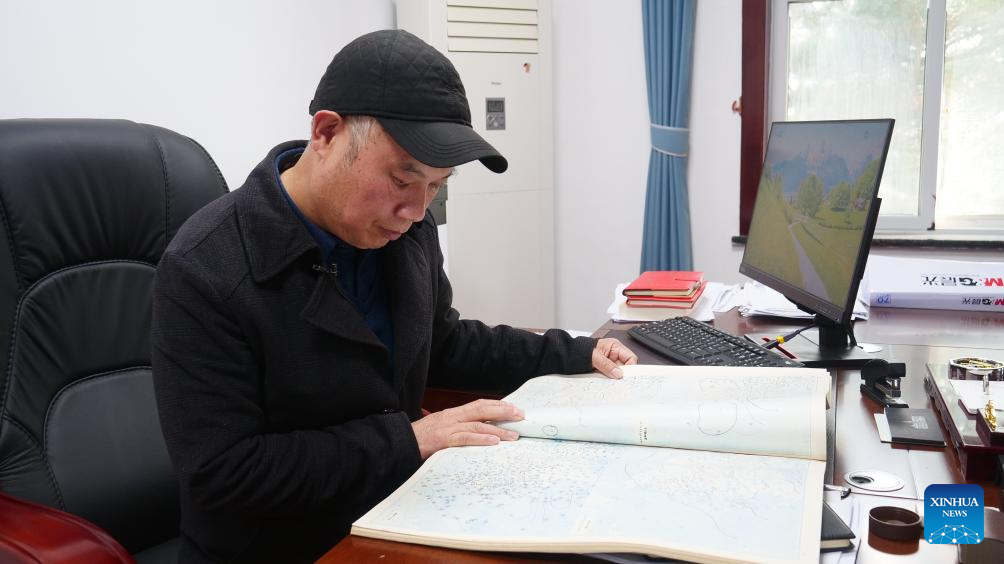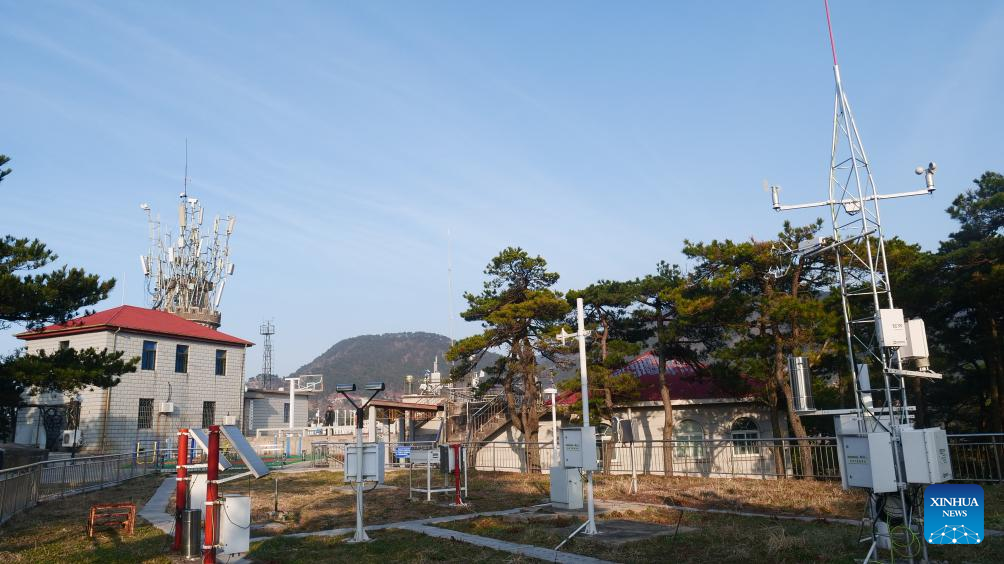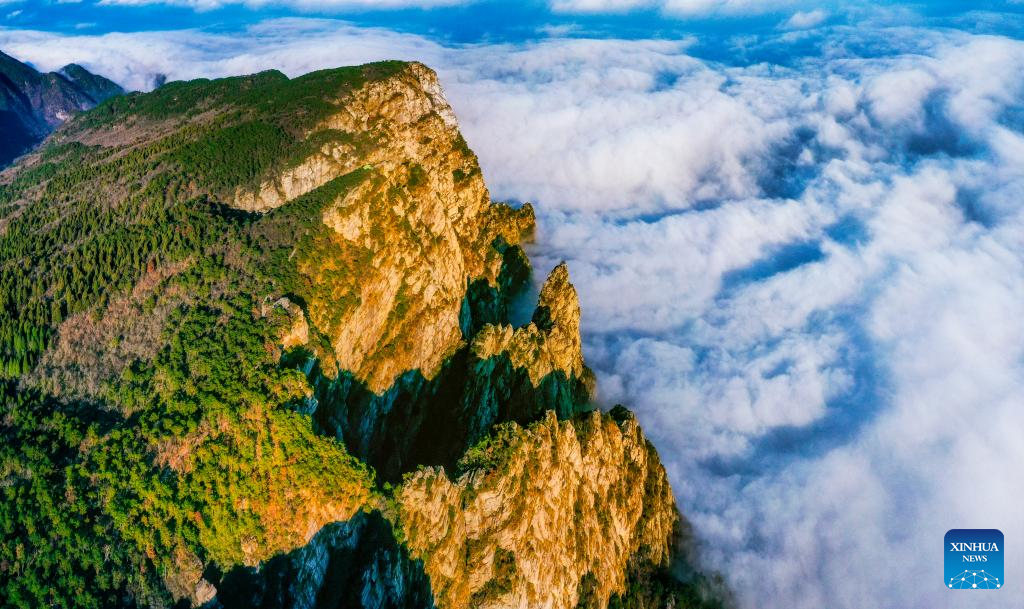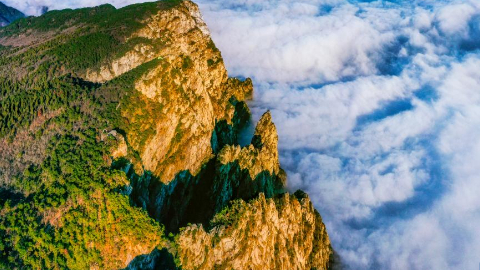
Han Wanxin searches for meteorological data in his office at Lushan Meteorological Bureau atop Lushan Mountain in east China's Jiangxi Province, March 12, 2024. (Xinhua/Huang Hexun)
NANCHANG, March 23 (Xinhua) -- Dedicated to weather observation for 40 years, Han Wanxin has grown accustomed to climbing 372 stone steps with an average slope of over 45 degrees to reach the Lushan Meteorological Bureau, his workplace.
Founded in 1954 and perched on the Lushan Mountain in east China's Jiangxi Province, the bureau is the province's only meteorological station with no highway access, and it also serves as the national reference climatological station.
The Lushan Mountain boasts unique geographical advantages and climate conditions, with an annual average number of rainy and foggy days reaching 172 and 196, respectively, making it an ideal place to carry out scientific experiments based on cloud and fog observation.
Han, 58, joined the bureau after his graduation in 1984 and currently serves as the bureau's deputy director. Over the decades, he has grown from "little Han" with a childish face to "old Han" with slight wrinkles, all while bearing witness to the evolution of modernized meteorological services.
At the beginning of his career, Han's daily work relied on basic equipment such as a clock and an electrical telegraph. "Meteorological observation is a job with time-sensitive requirements. At that time, we had to work in four shifts round the clock and sent meteorological telegrams on schedule to ensure the continuity of meteorological data," Han recalled.
Winter presented a challenging period for them, particularly when snowfall caused the steep stone steps to the bureau to ice up. Taking a tumble was part of their work routine, Han said jokingly.
The bureau's anemometer, placed atop a watchtower over 10 meters high at an observation site exceeding an elevation of 1,100 meters, is also susceptible to icing up.
"In the past, the meteorological data had to be collected and recorded manually," said Han. "To guarantee the accuracy of data on wind direction and wind speed, we had to climb onto the watchtower to clear the ice."
In 2014, intelligent instruments including weather phenomenon observation meters, precipitation phenomena meters and visibility meters were successively introduced to the bureau.
"Thanks to advanced and automated instruments, our meteorological data has become increasingly comprehensive and accurate," said Han, adding that the bureau has not only served as a meteorological information transmission center in Asia but also exchanged data with the world.
The meteorological bureau has also been listed as one of the six observation sites in a cloud-fog-testing station on the Lushan Mountain. The station, set up by the Chinese Academy of Meteorological Sciences, provides a platform for studying the origin of clouds and fog on the mountain and the artificial dissipation of fog, among others.
"In addition to serving scientific research, the bureau has also fueled tourism in the Lushan Mountain scenic area," said Yin Wei, director of the bureau.
In 2022, the Lushan Mountain was included in the first batch of "places to enjoy weather landscape" in China. Its unique meteorological landscape like glazed frost and rime has gained popularity among tourists.
"Last December, we issued a rain and snow forecast to the public, prompting the number of tourists to increase several times compared to the same period in 2022," said Yin.
On the 64th World Meteorological Day on Saturday, Han led two "post-95s," newcomers to the bureau, to the observation site early in the morning to record the weather data as usual.
With retirement looming in two years, Han said he hopes to impart as much of his experience as possible to the young observers. ■

This photo taken on March 12, 2024 shows the outdoor observation field of Lushan Meteorological Bureau atop Lushan Mountain in east China's Jiangxi Province. (Xinhua/Huang Hexun)

An aerial drone photo taken on Nov. 15, 2022 shows a sea of clouds at Lushan Mountain in east China's Jiangxi Province. (Photo by Li Jiantao/Xinhua)




